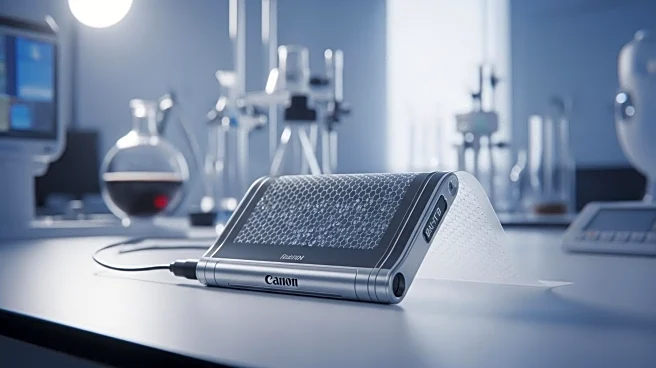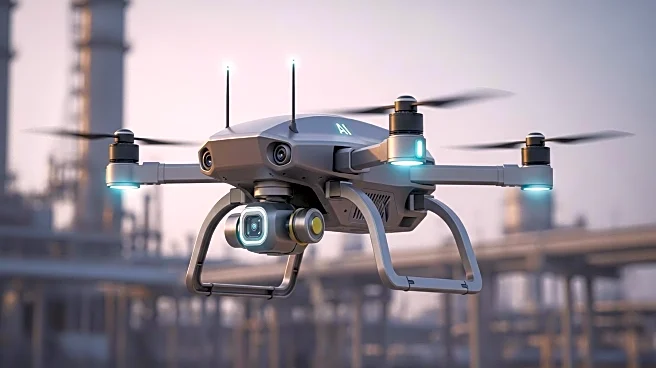What's Happening?
A recent study published in Nature explores the development of a vapor-induced porous graphene/PDMS nanocomposite, which significantly enhances pressure sensitivity and sensing range. The research demonstrates a 7-fold increase in pressure sensitivity and a 2.25-fold improvement in sensing range compared to non-porous counterparts. This advancement is achieved without complex fabrication methods, making it a scalable solution for high-performance pressure sensors. The nanocomposite is designed for applications in smart healthcare, sports science, and gait assessment, offering flexibility and durability. The study highlights the mechanical and electromechanical properties of the nanocomposite, emphasizing its potential for large-range pressure sensing applications.
Why It's Important?
The development of this graphene/PDMS nanocomposite represents a significant advancement in pressure sensor technology, with potential applications across various industries. In healthcare, it could improve biomechanical sensing, aiding in patient monitoring and rehabilitation. In sports science, it offers enhanced capabilities for analyzing athlete performance and injury prevention. The scalability and cost-effectiveness of the fabrication process make it an attractive option for mass production, potentially leading to widespread adoption in consumer electronics and wearable technology. The increased sensitivity and range of the sensor could drive innovation in robotics and automation, where precise pressure sensing is crucial.
What's Next?
The study suggests further exploration into the long-term durability and reliability of the nanocomposite under continuous use. Researchers may focus on optimizing the pore density and mechanical properties to balance sensitivity and hysteresis. The potential for integration into wearable devices and smart textiles could lead to collaborations with industry partners to commercialize the technology. Additionally, the sensor's low cross-sensitivity to temperature and humidity opens avenues for its use in diverse environmental conditions, potentially expanding its application in outdoor and industrial settings.
Beyond the Headlines
The ethical implications of this technology include considerations around data privacy and security, especially in healthcare applications where sensitive patient data may be involved. The environmental impact of the materials used and the manufacturing process should also be assessed to ensure sustainability. The advancement in pressure sensor technology could lead to shifts in industry standards, influencing regulatory frameworks and encouraging innovation in related fields.










